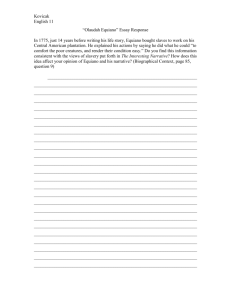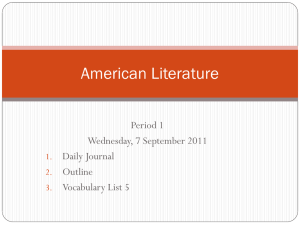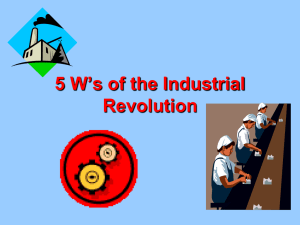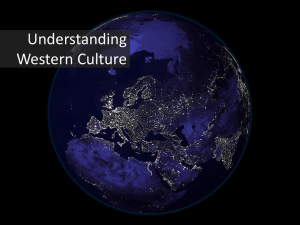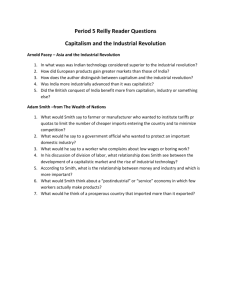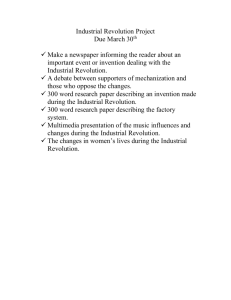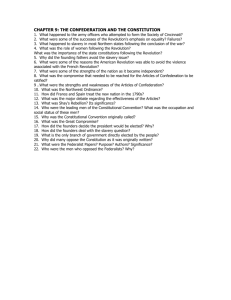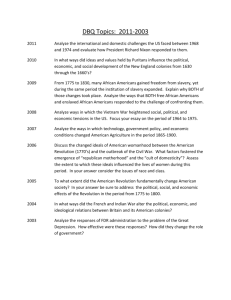Try to answer these questions in your own words
advertisement
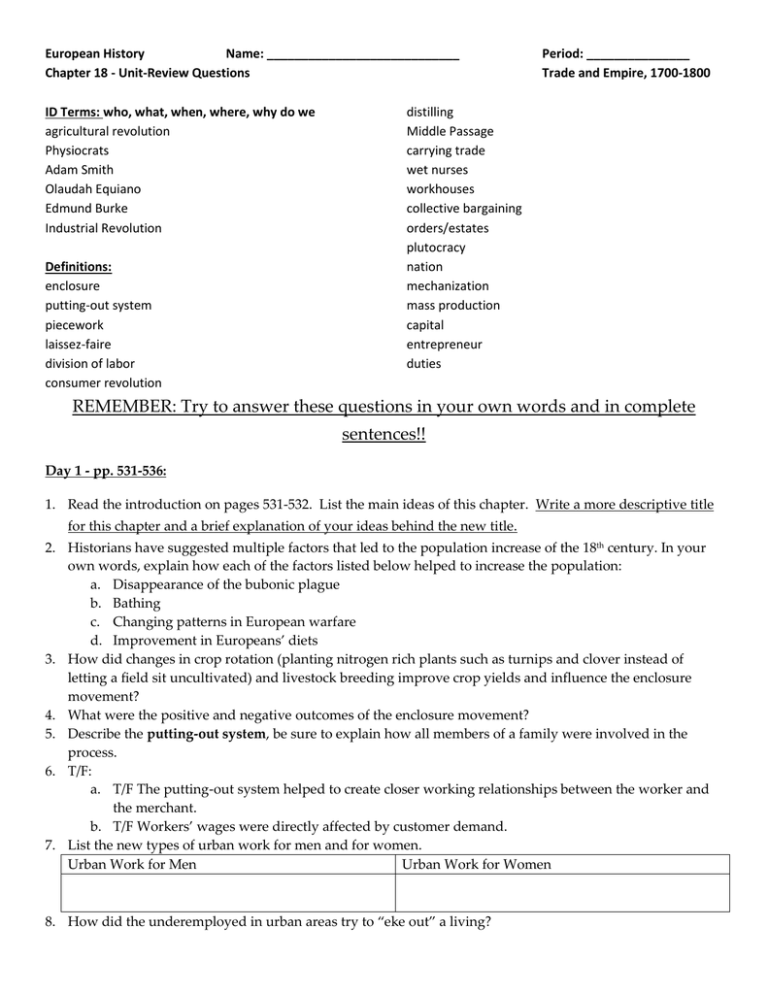
European History Name: ____________________________ Chapter 18 - Unit-Review Questions ID Terms: who, what, when, where, why do we agricultural revolution Physiocrats Adam Smith Olaudah Equiano Edmund Burke Industrial Revolution Definitions: enclosure putting-out system piecework laissez-faire division of labor consumer revolution Period: _______________ Trade and Empire, 1700-1800 distilling Middle Passage carrying trade wet nurses workhouses collective bargaining orders/estates plutocracy nation mechanization mass production capital entrepreneur duties REMEMBER: Try to answer these questions in your own words and in complete sentences!! Day 1 - pp. 531-536: 1. Read the introduction on pages 531-532. List the main ideas of this chapter. Write a more descriptive title for this chapter and a brief explanation of your ideas behind the new title. 2. Historians have suggested multiple factors that led to the population increase of the 18th century. In your own words, explain how each of the factors listed below helped to increase the population: a. Disappearance of the bubonic plague b. Bathing c. Changing patterns in European warfare d. Improvement in Europeans’ diets 3. How did changes in crop rotation (planting nitrogen rich plants such as turnips and clover instead of letting a field sit uncultivated) and livestock breeding improve crop yields and influence the enclosure movement? 4. What were the positive and negative outcomes of the enclosure movement? 5. Describe the putting-out system, be sure to explain how all members of a family were involved in the process. 6. T/F: a. T/F The putting-out system helped to create closer working relationships between the worker and the merchant. b. T/F Workers’ wages were directly affected by customer demand. 7. List the new types of urban work for men and for women. Urban Work for Men Urban Work for Women 8. How did the underemployed in urban areas try to “eke out” a living? Day 2 - pp. 536-539: 1. REVIEW: Write a comprehensive definition of the term mercantilism. 2. Describe how Physiocrats understood / defined economics in the 18th century. What aspects of their ideas are closely tied to the ideas of the Scientific Revolution and Enlightenment? 3. According to Adam Smith, what is the function of the state? What should the state try not to do? 4. Explain Smith’s concept of the “invisible hand”. 5. Contemplate Smith’s idea of the division of labor. Can you think of any business that uses this model? Explain your choice. 6. How did Denis Diderot redefine the idea of manual (blue collar) labor? 7. What types of goods (material and food stuffs) did the rich, middle class and working poor all tend to purchase? Make a chart. 8. How could the working poor use their material goods to help them out during hard economic times? Day 3 - pp. 539-543 : 1. Read “Samuel Gamble sets out from London on a Slaving Voyage.” Imagine you are one of the sailors or slaves on Gamble’s ship. Write a brief letter home explaining your situation to your family. 2. Why was there a need for slaves in the New World? 3. Read the primary source on pp. 542. A) Describe Equiano’s experiences as a ten-year-old boy. B) Think back on The Narrative of Frederick Douglas, how is Equiano’s experience similar or dissimilar to Frederick Douglas’s? 4. Read pg. 522 Slavery: What did the members of the Enlightenment have to say about slavery? What groups and individuals work to make 18th century society more aware of the realities of slavery in an attempt to bring about its end? Day 4 – 547-552: Harkness Discussion 1. In order to prepare for tomorrow’s Harkness discussion on this section, you need to do the following: a. Read each subsection (blue titles) carefully b. Formulate at least one question for each subsection – consider how all of the information from this and previous chapters is coming together and causing social change. c. Be prepared to reference the textbook specifically, in order to support your questions / claims d. Be prepared to talk – this Harkness will be graded and everyone is expected to participate. Day 5 – 552-555 1. Read the section Mechanization and Mass Production and complete the chart below. The first machine is done for you as an example. Machine Inventor Purpose of Machine Impact of Machine flying shuttle John Kay doubled the speed at which a faster weaving speed meant that weaver could make cloth more thread was needed in order to keep up the faster work pace spinning jenny water frame spinning mule power loom cotton gin Wedgwood porcelain (mass production) steam engine 2. Describe in your own words each of the six factors that enabled Great Britain to lead Europe in the Industrial Revolution: a. high levels of agricultural productivity b. available skilled workers c. ease of transportation d. natural resources e. political stability f. capital for industry
